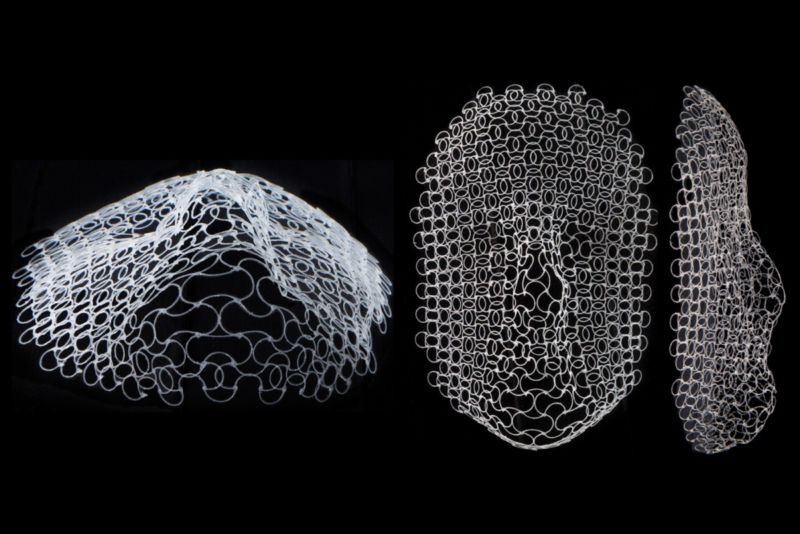
Enlarge / A lattice structure, originally printed flat, has morphed into the outline of a human face after changing the surrounding temperature. The facial shape is based on the likeness of Carl Friedrich Gauss. (credit: Lori K. Sanders)
The next big thing in 3D printing just might be so-called "4D materials" which employ the same manufacturing techniques, but are designed to deform over time in response to changes in the environment, like humidity and temperature. They're also sometimes known as active origami or shape-morphing systems. MIT scientists successfully created flat structures that can transform into much more complicated structures than had previously been achieved, including a human face. They published their results last fall in the Proceedings of the National Academy of Sciences.
Prior researchers had successfully come up with ways to get such materials to shape-shift into simple structures. MIT mechanical engineer Wim van Rees, a co-author of the PNAS paper, devised a theoretical method to turn a thin flat sheet into more complex shapes, like spheres, domes, or a human face. "My goal was to start with a complex 3-D shape that we want to achieve, like a human face, and then ask, 'How do we program a material so it gets there?'" he said. "That's a problem of inverse design."
But his original simulations were for an idealized sheet of material with no boundaries on how much it could expand or contract, and most real-world materials do have limits. It's a problem of "double curvature," first described by 19th century mathematician Carl Friedrich Gauss.
Read 7 remaining paragraphs | Comments

No comments:
Post a Comment